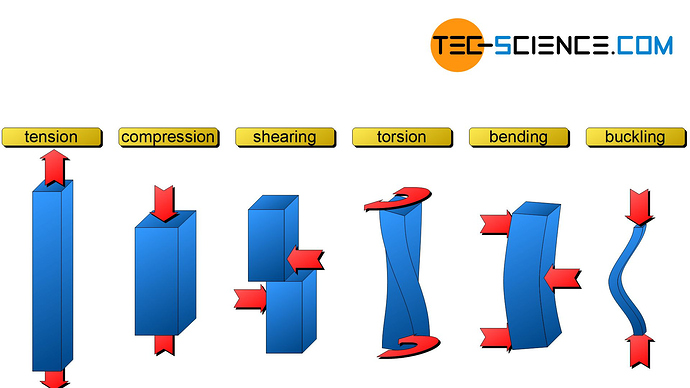Generally, tensile and compressive forces (i.e. imagine trying to pull vs. push) are what we use to characterize materials against. There are many more forces to consider in different design applications, imagine trying to draw a free-body diagram for an automobile!
Remember, stress is a force or combination of forces distributed throughout the whole of an object that acts to deform it.
Tension
Force resulting from an object that’s pulled or stretched by a force applied at opposite ends of the object.
Compression
Force resulting from an object that’s compressed or pushed by a force applied at opposite ends of the object.
Shear
Force resulting from two surfaces sliding past each other in opposite directions.
Torsion
Torsion is a moment that is applied to twist an object along a central axis.
Bending moment
Bending moment is a moment that is applied to bend an object, putting the part of an object above its neutral axis in tension and putting the part of an object below its neutral axis in compression.
Buckling
Same as a compressive force, more specific type of stress where a part is subjected to a gradually increasing load, and when the load reaches a critical level, a member may suddenly change shape and buckle.
